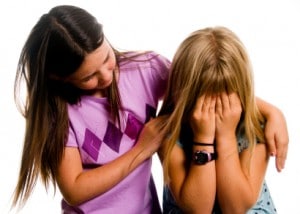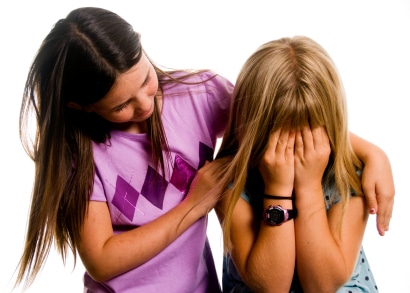 A bright eighth grader came home distraught one day. The child’s mom asked, “What’s wrong?” The child’s answer was disheartening. “I want to be home schooled. School isn’t fun like it used to be. Teachers are so mean.” The concerned mom talked to her child, a child who teachers raved about, a child who is known as a leader, a good friend, and a positive, strong personality. “Mom, it’s not what the teachers say or do to me, it’s how they act toward the other kids, the kids they don’t like, or the ones don’t do so well in school. These teachers, Mom, are supposed to be role models. I would never do the things they do to other kids! But, today, the teacher did yell at me in front of everyone because other kids in my group were talking. He said I should have made them stop talking. He asked me if I was too afraid to make them stop! Then he said that I should be a role model. Mom, it’s so hypocritical. I can’t make kids stop talking. I’m sick of it. Because of the way these teachers treat kids, I don’t even want to go to school anymore.”
A bright eighth grader came home distraught one day. The child’s mom asked, “What’s wrong?” The child’s answer was disheartening. “I want to be home schooled. School isn’t fun like it used to be. Teachers are so mean.” The concerned mom talked to her child, a child who teachers raved about, a child who is known as a leader, a good friend, and a positive, strong personality. “Mom, it’s not what the teachers say or do to me, it’s how they act toward the other kids, the kids they don’t like, or the ones don’t do so well in school. These teachers, Mom, are supposed to be role models. I would never do the things they do to other kids! But, today, the teacher did yell at me in front of everyone because other kids in my group were talking. He said I should have made them stop talking. He asked me if I was too afraid to make them stop! Then he said that I should be a role model. Mom, it’s so hypocritical. I can’t make kids stop talking. I’m sick of it. Because of the way these teachers treat kids, I don’t even want to go to school anymore.”
This situation had been progressing over a period of three months. The mother finally decided to take action and speak to her child’s teachers. What she saw was the faces of teachers who had no idea that they were hurting kids, kids that they thought the world of, kids for which they truly they cared. Most teachers mean well when they react to frustrations, disappointments, and challenges in the classroom. Good intentions, however, don’t always make up for the pain caused by hurtful teacher behaviors.
Today, much of our society accepts some of the most hurtful language as acceptable humor. Sarcasm has become commonplace in the home, classroom, and media. Much media humor is sarcastic. Unfortunately, that very sarcasm is what fuels an uncaring community in the classroom. Some kids think it’s funny. Some kids are indifferent. Some kids can’t read the innuendo and social signals behind its use. Some kids misunderstand it, and some kids are deeply hurt by it. How does a classroom teacher decide what is ‘safe sarcasm’ and what is not? How does a classroom teacher decide what is a positive and effective reaction in the classroom or what is not? Is there ever room for teachers to be hurtful in their approach to their students? There are those that would justify it, however, those same teachers pay a price beyond what they may recognize. That price is the children’s sense of well-being, wholeness, and their potential success. Often, rather than more compliant students, they get students who lash out.
Hurtful behaviors and language in the classroom may be considered bullying. Consider what behaviors we don’t accept from students toward other students in our classrooms. Do we, teachers, ever use those same behaviors towards students in the name of discipline, classroom management, or even motivation?
What teacher behaviors are hurtful or actually bullying? How do we know if we are using these behaviors? One way to consider these difficult questions is to reflect. We can ask ourselves:
Do we ever do the following behaviors?
- Make fun of a child (kidding children about moving slowly, not being with it, behaviors we find uncomfortable or odd, etc.)Ignore the pain or sadness of a child.Become verbally brutal in our words or tone: Shouting out orders to do something … “Come here!” “You stay there!” in a commanding or disdainful way, calling kids losers, telling them they are SpEd so they are not smart enough to read “that” book, etc.Issue vindictive or counterproductive threats: “If you don’t finish your work, you won’t get lunch.” The difference between hurtful threats and discipline is discipline teaches appropriate behavior and is thought out ahead of time with the child’s understanding of the consequences.Be inappropriate with intimacy: Holding or hugging in a way that is inappropriate, or kissing.Ignore a child.Be brusque or short in time given to listen to a child.Continually point out what the child is doing wrong.Push a child along physically; manhandling or pulling to make the child move.Snatch an object out of a child’s hands.
- Think disdainfully of a child and letting it show.
- Yell in an out of control manner at a child.
- Cross the line between showing appropriate anger in a respectful way and being disrespectful to a child to show our anger.
- Tell a child that they did something bad when what they did was not deliberate or malicious.
- Assume the worst about what a child just did without taking the time to understand the child’s reasoning and motivation.
- Not act when a child is mistreating another child.
- Not act when a grown-up is mistreating another child (finding the best way and time is not easy).
- Use hurtful sarcasm directed at a student to discipline.
- Talk badly about kids in the teacher’s room, or worse, in the halls or classroom in front of kids.
- Deliberately humiliate children in front of their peers.
Some other examples of hurtful behaviors that children have experienced at the hands of their teachers are:
- A child’s binder is unkempt so the teacher holds it up as an example to the class and lets all the contents fall onto the floor as the teacher berates the child in front of everyone.
- Praising the children who got A’s in a way that embarrasses them and makes them targets of envy or causes others in the class to feel put down.
- Targeting kids that are labeled ‘trouble makers’. Not cutting them any slack, while at the same time, favoring kids who are more popular, athletic, or intelligent. Allowing those kids to escape deserved discipline that the targeted kids must endure.
Reflecting on our behavior and language to address problem issues is never easy. None of us is perfect. All of us fail to meet our own standards at times. The purpose of reflection is not to find our “failures” and berate ourselves for them, but rather to see where we may be able to improve and help ourselves and our students to grow.
Two simple approaches to behavior management that make a huge difference in the atmosphere of our classrooms:
First: Use positive language when speaking to youth. Never use sarcasm or destructive criticism.
Second: Use authoritative discipline. The authoritative approach is firm, but involves students in making class rules providing the rationale behind those rules.
We are our students’ role models. We want to be the best role model we can be! We can when we take the time to reflect, change what is not working or what we don’t like, and grow from the experience.


